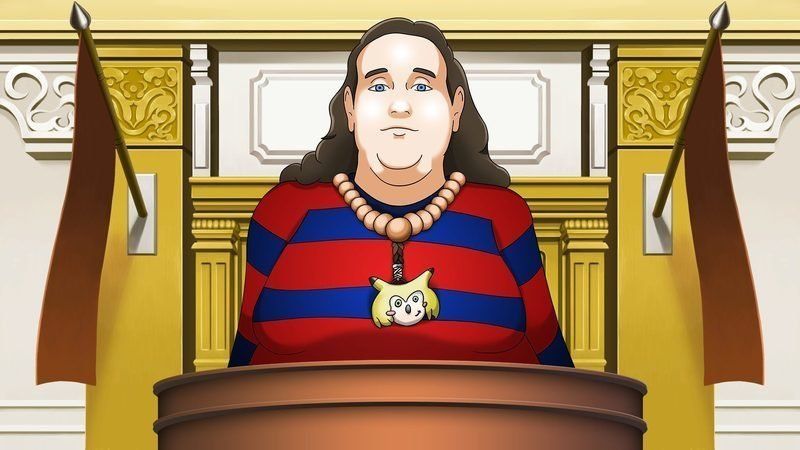We Need To Talk About Mikey
Posted by <Eamon Levesque> on 2022-02-15
We Need To Talk About Mikey: Analysis on Escaping the Cringe Vortex
May 18th, 2021: I DMed my friend a post from the Instagram account @mikeymiles160. The post has five video clips of the account’s owner, Mikey, hitting the gym. Mikey starts with some leg lifts, then incline bench press, then barbell triceps extension. Standard exercises, questionable form.
In the last clip, Mikey approaches a punching bag that’s hanging from some monkey bars — normal in space-conscious gyms in his native New York City. He jumps onto the bars, swings towards the bag one rung at a time, then leaps onto the bag and hangs from it like a koala.
You’d hope that Mikey was just confused or over-excited. Maybe the configuration made him think there was an exercise where one uses the bag and the monkey bars simultaneously. But after dropping to the floor, Mikey gives the bag a halfhearted jab, indicating he does understand what a punching bag is for (punching).
After someone in the comments section asked “what muscle groups you were working out while hanging from the punching bag,” Mikey offered this defense:
It works a few different fundamentals. First off… you have to jump to get up there. Not everyone can do that. Second… we work “agility” and “mobility” twisting and turning that body. Core strike as well really. Then you act like Bruce Willis in die hard and jump down like you saved the fucking world.
My friend agreed that the clip was the best piece of monkey bars content since that al Qaeda training video. He was now Mikey-pilled: he now follows Mikey and regularly sends me Mikey content.
About a half-dozen of my friends are among the 7,600 Mikey-pilled others who follow his IG. He’s become a sort of in-joke amongst NYC’s Extremely Online crowd. Will and Felix from Chapo are Mikey-pilled, as is New York Nico, comedians Sarah Squirm and Vic Berger, and TV writer Jeremy Bronson. Seth Rogen might be the most famous Mikey-pilled individual.
Mikey’s account is mystifying, hilarious, and captivating. But it’s also deeply depressing, and another example of a disturbing online trend that’s grown increasingly common. You might already be familiar with some examples: Mikey has joined a sad cabal of internet micro-celebrities whose mental illnesses manifest as inadvertently funny content. This tendency makes them vulnerable to a relatively new cultural phenomenon, one that can take those without the wherewithal to escape it and eat them alive.
To understand his predicament, it’s important to understand what makes Mikey so funny. Here’s some of the content that gave rise to his fanbase:
• Wet Food: Mikey regularly posts exceptionally unappetizing or even dangerous photos of his cooking under the tag #foodgasm (the visceral nature of these photos are a common route to becoming Mikey-pilled).
• Workouts: Despite the best efforts of Good Samaritans in his comments, Mikey exercises with form that virtually guarantees injury (including the potentially-crippling mistake of locking his knees while in the leg press).
• Catchphrases: Mikey routinely refers to himself as “just a kid from New York” and describes things he likes as “one word: powerful”. He sells merchandise featuring both phrases.
• Personal Videos: for a fee, Mikey will record a video of him doing practically anything you want — for example, reading Kaczynski’s “Industrial Society and Its Future” in front of Watto from The Phantom Menace.
I’ve thought a lot about what makes Mikey so engaging. The closest parallel I can find is in Gvasalia’s Balenciaga. When I see Mikey gyrating to 3 6 Mafia on my Explore page alongside overpriced menswear and slick Equinox creatures, the effect is similar to a look like this presented amongst the traditional elegance of Fashion Week. Put Mikey’s wardrobe on the right model and you could start to see the similarities.

Mikey’s unnerving nature is so captivating that it almost feels deliberate, even scripted. Well, almost. When cringe-based humor is used in scripted media, the embarrassment of a character is usually played for laughs and then tempered with humility. The obvious example would be Michael from The Office: in the aftermath of his antics, he’s revealed to be a sympathetic character. Mikey lacks this quality. He’s a misogynist. He’s estranged himself from his family. Notably, he was arrested on July 31st, 2021 for Sexual Abuse in the Third Degree, allegedly after spanking a woman on the street.
All of this context is to stipulate that yes, watching Mikey humiliate himself is funny and yes, Mikey’s actions make him downright impossible to sympathize with. But I’m not arguing that you should care about Mikey. I’m arguing that you should be worried about what’s happening to Mikey.
Since launching in August of 2019, the subreddit r/MikeyMiles has gained 1,800 members. Every day, Mikey’s social media posts are reshared, discussed, and mocked by dedicated followers. Fancams of Mikey’s cringiest moments are common. Mikey’s apartment has been re-created in the Sims. When on the day of Mikey’s arraignment for the sexual assualt charge, he was tailed onto the subway and to the courthouse.
It’s not an exaggeration to say that if Mikey described his life to a psychiatrist, he could feasibly match the DSM Criteria for paranoid schizophrenia. He’s being watched. He’s being followed. Everyone is laughing at him. For Mikey, thousands of people interact with him in a way that simulates the symptoms of a severe mental health disorder. The fact that this is even possible should give us all pause.
Mikey’s predicament is certainly a new and novel one, but not that new. His situation will ring bells for anyone who has been anywhere 4chan-adjacent since about 2008. The community that has formed around the shared disdain and obsessive documentation of Mikey’s life follows an existing playbook. That would be ChrisChan and her community of stalker-documentarians.
ChrisChan is a difficult figure to introduce. If you don’t recognize her name, there’s virtually no way to summarize who she is or what happened to her. If you do, then any introduction will seem inadequate, as every minute of her life has been obsessively researched, cataloged and disseminated. That said, Alex Nichols once described ChrisChan as “the Greek Tragedy of the Early Internet,” which is pretty apt.

In 2007, Christine (a trans woman born as Christian Chandler, or ChrisChan) uploaded a particularly embarrassing submission to a Playstation sweepstakes. That content was reposted to 4chan, who unearthed her additionally embarrassing “Sonichu” comic series and her quest to find a “boyfriend-free girl.” ChrisChan is autistic, and her family’s financial situation precluded therapy/treatment that would help her better function in society. As such, she was easily catfished or persuaded into compromising situations. Notable among them were Christine being coerced into sexually assaulting herself in 2009, being allegedly blackmailed for $6,000 in 2017, and countless leaks of her nude photos (many of which were mailed to her parents). Celebrating and cataloging these instances of abuse became a hobby for some, leading to the creation of a sprawling, exhaustive Wiki.
It’s difficult to quantify the degree to which ChrisChan’s community of stalkers contributed to her deteriorating mental health via near-daily abuse over a fifteen-year period — but like, c’mon, none of that could have helped. Her story seems to have finally reached a conclusion: ChrisChan was arrested on August 1, 2021 for sex crimes against a family member, resulting in media coverage everywhere from Newsweek to Tucker Carlson.
The parallels between ChrisChan and Mikey are already overwhelming; the fact they were both arrested on the same day shattered brains among those who knew them both. Brandon Wardell and Jack Wagner’s podcast Yeah But Still recorded an episode highlighting these similarities in the aftermath of the arrests (the source of the above Alex Nichols quote), others online made the same connection. In the course of discussion, individuals similar to Mikey and ChrisChan were mentioned: DarkSydePhil, WingsOfRedemption, KingCobraJFS. All examples of online notables with followings due to longstanding outlandish public behavior.
Missing from the conversation is an uncomfortable acknowledgement: this is a thing that can happen to people. You can now step on enough rakes to become globally famous. If you do something sufficiently embarrassing online, it is possible that you will get Truman World-ed. That wasn’t true until quite recently, the implications bear analysis.
Even if you think of Mikey, or ChrisChan, or whomever will come next as personally repulsive, I would argue that what they are experiencing is a new cultural phenomenon that merits discussion. It’s discreet from other forms of online shaming, this isn’t Cancelation or Revenge Porn. But it can be understood as a “Cringe Vortex”, a storm of scorn that emerges under the right conditions.
I’ve been fascinated with Cringe Vortex victims such as ChrisChan and those like her for some time (I wrote my shitty undergrad thesis on her several years ago). Obviously, plenty has been written about them and similar individuals who have been coaxed into self-owning online. The term “lolcow” is often thrown around, which I suppose we should address. Beyond being callous, the term is inaccurate, and will lead to an incomplete understanding of what we’re discussing. We’re not talking about a “type of person,” we’re talking about a phenomenon that can befall any individual, provided they make some relatively common mistakes on the internet and in sequential order. I’ve attempted to map those below.
There are distinct phases and potential exits from the Vortex, which can be understood through those who have passed through them:
• Pre-Vortex Conditions: Subject creates content which provides amusement for unintended reasons.
• Subject must initially upload the content themselves — others doing so is classic doxxing/cyberbullying, separate issue.
• Category 1 Cringe Vortex: begins if a third party re-shares Subject’s content to a wider audience, usually to highlight its inadvertent comedy.
• Category 2: begins if the Subject’s content finds greater-than-initial success in this new context, reaching a larger audience. Owing to both human nature and social media algorithms, this is a distinct possibility. Category 2 also encompasses the Awareness Horizon, where the self-awareness/self-confidence of the Subject can open escapes to minimal — or in rare cases, positive – outcomes.
• The Leonhardt Exit: Subject does not engage their newfound audience, and ceases making the content that began the Vortex. By far the most common approach.
• (Named for Damien Leonhardt (fka “Jessi Slaughter”), who attempted to speak out about her assault by Blood on the Dancefloor singer Dahvie Vanity. Vicious cyberbullying resulted as a result of the video, causing their father to post another video threatening her attackers with “consequences that would never be the same.” Slaughter disengaged after this post, the growing Vortex subsided (though not without causing significant harm to her mental health and social life). Years later, Damien was able to regain some control of their online narrative via a series of interviews.)
• The King Exit: Subject embraces the negative attention, capitalizing on it but ultimately remaining the butt of the joke.
• (So named for Andy King, whose efforts to secure bottled water for the Fyre Festival began a Vortex he then exited by becoming the face of an Evian campaign. (See also: William Hung))
• The Jurasek Exit: reserved for those who, as our own Nate Sloan puts it, “understand the dark truth, that what is based and what is cringe is purely a matter of perspective,” accepting that what some find cringe is also what makes them beautiful and unique. By far the most difficult/improbable.
• (Named for John Jurasek — the eccentric YouTube fast food reviewer known as ReportOfTheWeek, who stoically surfed a Vortex to 2.5m followers. (See also: Tommy Wiseau))
• Category 3: begins if the individual does not possess sufficient self-awareness to take the above exits, instead taking a defensive posture while continuing to produce the content now fueling the Vortex.
• Here the Cringe Vortex enters a chain reaction. It can now grow indefinitely and attract a larger audience, so long as the individual provides their new followers with more schadenfreude. Significant damage to reputation and mental health now likely.
• (A Jessi Exit is still possible in this phase, often by extraordinary means — i.e. deleting social media accounts, legal action.)
• Category 4: begins if the Subject, now under the scrutiny of a large and unforgiving audience, is found to have done anything that can be construed as illegal or immoral (even if this action pre-dates the Vortex).
• This is a critical phase for the Cringe Vortex. Finding or witnessing a past transgression of the subject is vital in codifying the in-group / out-group dynamics in play. The in-group (vortex participants) are now validated in their suspicion that the out-group (the subject) is a lesser individual who deserves the treatment they are receiving. This allows for the audience of the Vortex to suppress feelings of sympathy they may have for the Subject.
• Category 5: begins if the individual’s audience grows to include bad actors, who sadistically bait the Subject into further embarrassment. Severe damage to mental health becomes a foregone conclusion.
•Category 5+: begins if these bad actors attempt increasingly elaborate or damaging acts of harm against the Subject.
ChrisChan is, naturally, a rare Category 5+. Another Category 5+ well known in Japan is known as the “HaseKara Calamity.” in Japan.

We can map it against our Vortex Categories:
• Pre-Vortex Conditions: In 2012, the teenage Ryota Hasegawa enlisted the help of self-described cybercrime lawyer Takahiro Karasawa after he had been doxxed on 2channel (the imageboard which inspired 4chan).
• Category 1: Despite his “cybercrime expertise”, Karasawa’s only assistance to Hasegawa consisted of him posting to 2channel, and requesting that someone make a thread for him that politely requested an end to the trolling.
• Category 2: As paying a lawyer to post “knock it off” on an imageboard is clearly funny, Karasawa’s gaffe was widely shared amongst boards on 2channel.
• Category 3: Karasawa lacked the self-awareness to realize that his protestations were giving 2channel additional meme fodder, and continued to demand they stop posting about him. At this point Hasegawa performed a Jessi Exit by maintaining a lower profile than his lawyer, who was now at the epicenter of the Vortex.
• Category 4: By nature, Karasawa had performed an action viewed as hostile by the group by inserting himself on behalf of his client. This meant that any response was now fair game.
• Category 5: A cult forms around Karasawa, with distinct groups designed to research his every move, promote him as a celebrity, and directly intervene in his life. His office becomes a popular destination for the cultists, who post stickers of his face on the door and throughout the surrounding area.
• Category 5+: Karasawa became nationally famous as 140 bomb threats were in across 66 Japanese prefectures using his name, and his family grave site was desecrated.
Mikey is currently in Category 5. This is somewhat surprising; his practice of recording fan-requested videos does give his followers a direct means of controlling his behavior. More surprising still, this has had some positive impact: Mikey was an antivaxer until someone paid him to make a video of him getting vaccinated. This may be a side effect of Reddit’s content moderation policies, which are nominally more strict than the imageboards and private forums (4chan, KiwiFarms) that fueled early Cringe Vortex creation.
Similar to how the “for the lulz” trolling tactics of 2000s 4chan became weaponized as alt-right harassment tactics in the 2010s, the Cringe Vortex should be monitored as a tool with potential to inflict damage to individuals from vulnerable communities. The fact that the Cringe Vortex has been created time and time again with such uniformity indicates that there is at least a subconscious knowledge of how to create one. It’s quite easy to imagine the Cringe Vortex pattern germinating in any given radicalized online community, before spilling out onto social media to recruit more “normie” online users to harass a target they’re politically opposed to.
Hopefully, identifying the phenomenon and those who have escaped it successfully can serve as a blueprint for damage control and mitigation.
But basically what I’m saying is –
First they came for Mikey Miles,
I laughed at his cringe because I wasn’t
Then they came for me,
And by that time there was no one left based enough to speak up